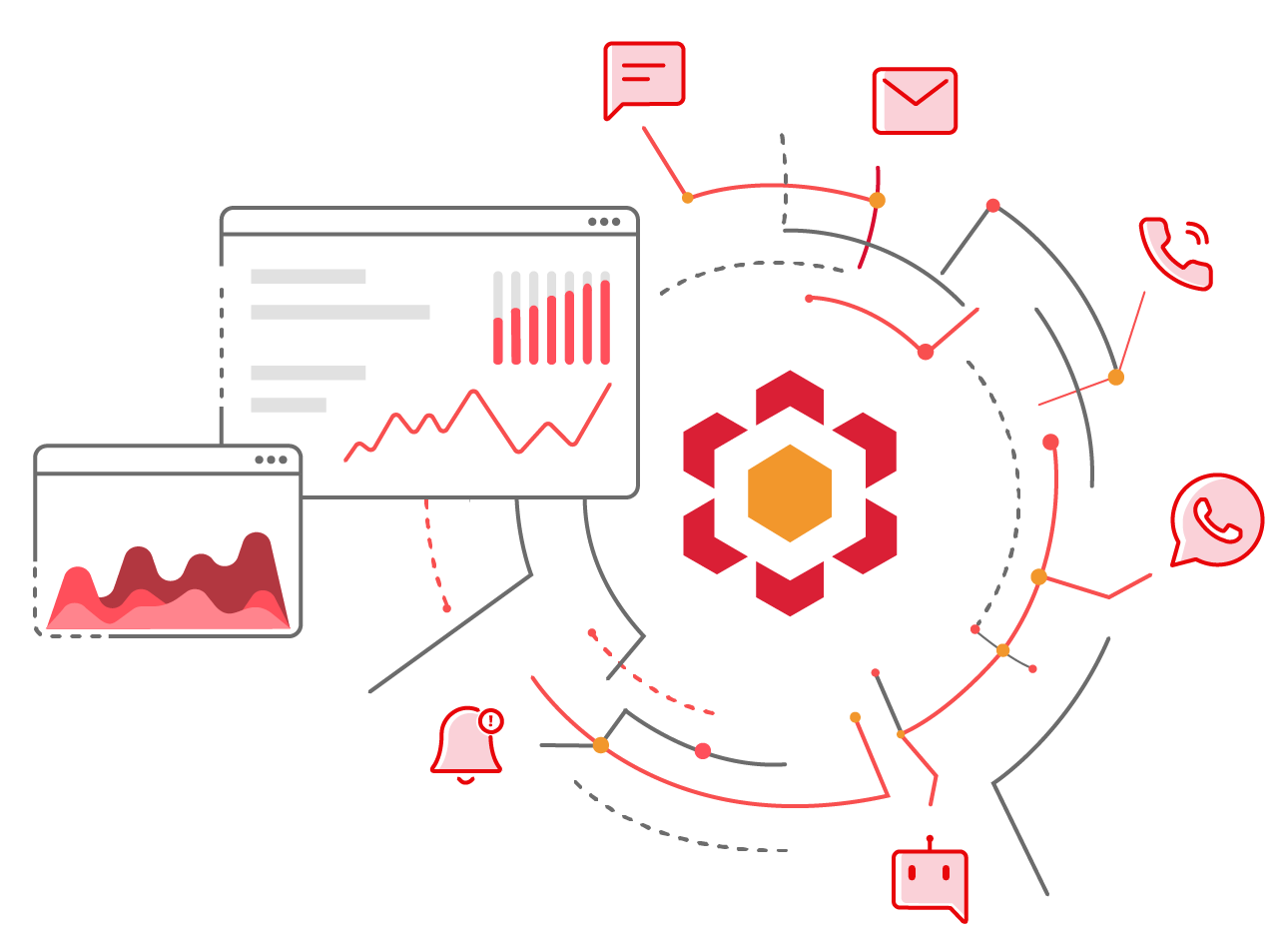In an age where business has no borders, the ability to communicate across languages is not just an advantage; it’s a necessity. Global expansion and diverse customer bases demand that companies embrace multi-language support to thrive. As you strive to connect with customers worldwide, clear and effective communication in their native language can make all the difference.
This is where CPaaS (Communications Platform as a Service) steps in, offering a bridge over the language divide that often separates businesses from their potential customers.
This blog post will guide you through the importance of multi-language support in global communication and how leveraging CPaaS can help you build stronger relationships with customers, improve user experience, and drive growth for your business.
Language Barriers in Global Communication
As businesses venture beyond their local markets, they confront an invisible yet formidable barrier, language. This barrier can be a major stumbling block, often leading to misunderstandings, lost opportunities, and even strained relationships. It’s a challenge that, if not managed effectively, can steer international ventures off course.
Take, for instance, a US-based tech company launching a product in Japan. Without adapting their messaging to the Japanese language and cultural context, they might find their cutting-edge product lost in translation, greeted with confusion rather than excitement.
Or consider the European e-commerce platform that struggles to gain traction in Latin America because its customer service can only respond in English and French, leaving Spanish-speaking customers feeling neglected and frustrated.
These scenarios are not just hypothetical, they are real-world examples of how language barriers can disrupt business growth and international relations. In a digital age where a message can traverse the globe in milliseconds, it’s not the speed of communication that’s the issue, but the clarity and cultural relevance.
By overlooking the linguistic nuances of your target market, the message you intended to send can become the message they never received, or worse, one that offends.
The Need for Multi-Language Support
The demand for multi-language support is soaring as businesses expand globally. In e-commerce, providing a shopping experience in the customer’s language can significantly boost sales, creating a personal connection that goes beyond mere transactions.
Customer service also reaps the benefits of multilingual communication, solving problems more effectively and fostering a sense of loyalty and trust with customers.
In critical sectors like healthcare, multi-language support can dramatically impact service quality and patient care, ensuring clear understanding and accurate information exchange. Embracing language diversity not only enhances customer satisfaction but also expands global reach, inviting a wider audience to participate and engage.
This inclusive approach enriches the customer experience and opens up new markets, celebrating cultural diversity and connecting businesses with the world in a more meaningful way.
How CPaaS Enables Multi-Language Communication
CPaaS is revolutionizing the way businesses interact with their global audience by embedding powerful multi-language capabilities into their communication strategies.
Featuring cutting-edge tools like real-time translation, language detection, and multilingual Interactive Voice Response (IVR) systems, CPaaS platforms are the engines driving the seamless transition between languages in a variety of customer interaction scenarios.
Real-time translation services empower instant, accurate conversions of text and speech from one language to another, ensuring that the conversation flows smoothly without language barriers.
Language detection algorithms can automatically identify the customer’s language, enabling a personalized communication approach from the get-go.
Meanwhile, multilingual IVR systems greet callers in their native tongue, providing a familiar and welcoming user experience that navigates them through support and service options without confusion.
The beauty of CPaaS lies in its flexibility and integration capabilities. Through robust APIs, these multi-language services can be effortlessly incorporated into existing communication platforms, whether it’s a customer service chatbot, an email marketing campaign, or a voice support line.
This integration ensures that no matter the medium—be it voice, message, or video—the language of your customer is the language of your business.
Overcoming Cultural Nuances
Multi-language support transcends simple word-for-word translation by embracing the complex layers of cultural nuances and colloquialisms. CPaaS solutions are designed not just to switch languages, but to convey the intended tone, humor, and context that are often deeply rooted in local culture. This ensures that messages are not only linguistically accurate but also culturally resonant, bridging the gap between mere translation and meaningful communication.
The importance of cultural sensitivity in global communication cannot be overstated. It’s about recognizing the uniqueness of each audience, from their idiomatic expressions to their social values. CPaaS platforms, equipped with sophisticated language processing and cultural intelligence, navigate these subtleties, allowing businesses to approach their customers with the respect and personal touch that fosters trust and loyalty.
Best Practices for Implementing Multi-Language Support
For businesses ready to harness the power of multi-language communication, here’s a strategic checklist to ensure effective implementation:
Identify Key Languages: Determine which languages your target audience speaks and focus your resources on these to maximize impact and efficiency.
Prioritize Quality Translation: Invest in high-quality translation and localization to ensure that content is culturally and contextually appropriate for each market.
Ensure Consistency Across Channels: Maintain uniform language support through all customer communication channels to uphold your brand’s reputation and customer trust.
Stay Current with Language and Culture: Regularly update and review your language content to align with the evolving nature of languages and cultural trends.
Leverage Technology: Utilize CPaaS platforms with robust APIs for integrating language capabilities smoothly into your existing communication systems.
Gather Customer Feedback: Actively seek out and analyze customer feedback on language support services to continually refine and enhance the user experience.
Conclusion
The strategic implementation of multi-language support is not just an operational upgrade—it’s a commitment to inclusivity and global engagement.
By embracing linguistic diversity and cultural nuances, businesses can forge deeper connections with international audiences, turning language from a barrier into a bridge.
The future of communication is multilingual, and the path forward is clear: adapt and thrive in a world without linguistic borders.

Harish Thyagarajan
Content Marketer
Supercharge Your Communication!
Get in touch with our experts who strive hard to bring the very best in cloud communications technology to you.


